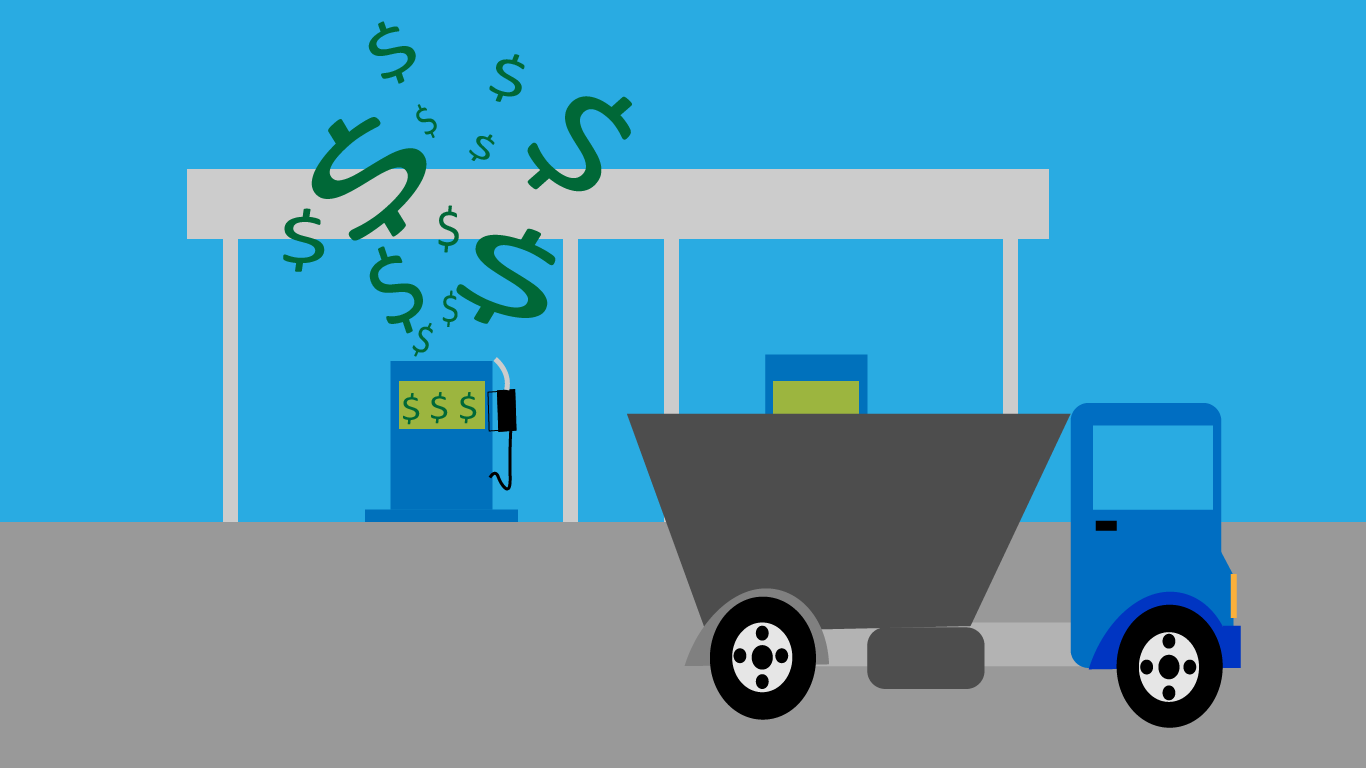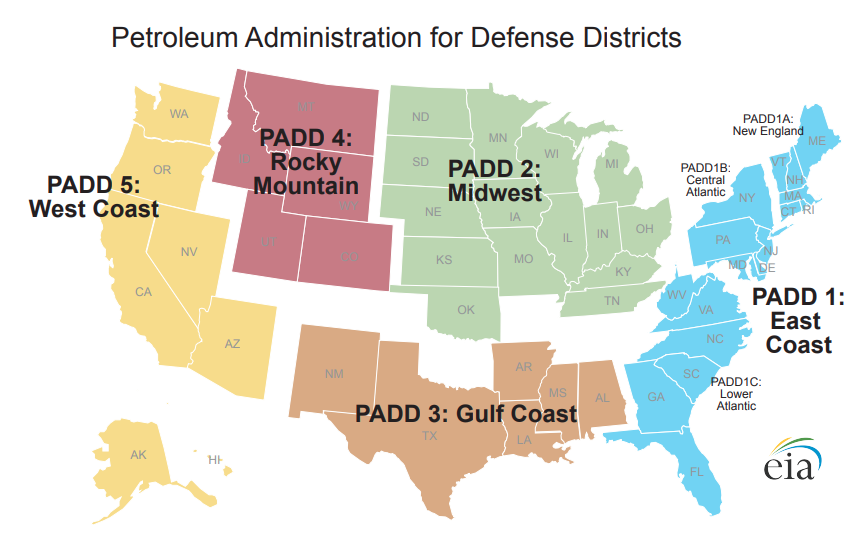
Fuel Surcharge in Transportation Management Software
Diesel prices are rising higher every day. As of this post, the average prices in Texas are at an astonishing $5.245 per gallon. These prices have a massive impact on the trucking industry for bulk commodity haulers both big and small. With fuel prices eating into profits across the board, it is the small trucking operations and owner operators that are taking the biggest financial hit. Sometimes smaller trucking companies are not able to land contracts that contain a Fuel Surcharge agreement. These Fuel Surcharge agreements help offset the increased fuel prices by paying carriers a fee that scales with the average price of diesel fuel in each PADD, or geographic region. Larger carriers often are in a better position to negotiate with customers and normally already had contracts in place before the drastic spike in fuel prices started.
Now this does not mean that big companies are not feeling the squeeze too because most prior contracts did not anticipate this big of a price increase. This leads to revised contracts that must be negotiated to get a fair rate. There is no real standard when it comes to these FSC models, and every shipper has in house models that attempt to minimize the cost. This variety in FSC configuration in the market leaves carriers on their own to produce a reliable way to integrate FSC into payroll. Relying on the current software you use could mean a lot of manual calculations and headaches. Dispatch Commodity has collaborated with carriers over the years to make sure our system has the flexibility to accommodate multiple unique FSC models and easily apply them to your payroll and billing. We will share a glimpse how FSC works and provide examples of the most popular models in use within Dispatch Commodity.
Fuel Surcharge Essentials
PADD Pricing
-Basically, this is the average cost of diesel for a given region which is determined by the U.S. Energy Information Administration.
Here is a quick view of the PADD price map.
Source: U.S. Energy Information Administration
Fuel Price Floor
-The price floor is basically the zero point for your FSC. If the price of fuel is above this point that means you may be getting an FSC payment. (We will cover why it is not a guaranteed payment later.)
Interval Amount
-This is the number you will use to divide the difference between the price floor and the PADD price.
Increment Amount
- The amount the FSC payment increases depends on the interval amount.
While it might be hard to understand just by reading the terms, here is a quick example to make it a little easier.
PADD Price = $2.50
Price Floor = $2.00
Interval Amount = .05
Increment Amount = .025
Total FSC = $.25 per mile
Let us boil that down a little more.
First take your PADD price minus your price floor which using this example gives us $0.50.
Now take your $.50 and divide it by your interval amount of .05 to get 10.
Lastly take 10 and multiply it by your Increment Amount which gives us the $0.25.
Here is the formula.
((PADD Price - Fuel Price Floor) / Interval Amount) x Increment Amount
With simple math, you now have given yourself an extra $0.25 per mile to help offset the cost of fuel to haul your loads. Of course, this is a basic example, but this should give you a general idea of what you are looking for when FSC is mentioned in a hauling contract. While in essence FSC is simple, it can be manipulated in contracts with some fancy wording. Since there is no industry standard, it is worth doing your homework. Always make sure you read the fine print, especially when it comes to how the terms of the contract are defined. The best way to explain this is by going into the standard models Dispatch Commodity accommodates.
The most common FSC setup in Dispatch Commodity uses the same model that our above example does. Our system automatically looks at the location the load was ran, the date it occurred, and the mileage traveled, then grabs the PADD pricing that for that specific load to calculate and apply your FSC fee. We also let you decide to include this fee on rejected loads or whether you wish to include any possible negative FSC fees which could occur if fuel prices lower than your price floor. This is the part we mentioned earlier on how FSC is not a guaranteed payment. This model is one of the most basic ways to include a fuel surcharge in your invoicing.
More recently there have been variations of the basic FSC model that alter the criteria used to give an FSC rate. One of the most common changes was the date range used to get the average PADD price moving away from the traditional weekly average to bi-weekly or in some cases monthly. Another recent change was the type of rating used to determine the FSC fee. Rates have moved away from the traditional model and more towards a standard rate sheet. An example being tying the FSC rate directly to a percentage of the total load fee that changes based on the PADD pricing. With these recent changes to FSC models Dispatch Commodity has made our FSC setup flexible to allow a wide variety of rates, PADD price date ranges, and units of measure (miles, gallons, etc.) so that you can easily integrate the FSC on the contracts you may sign. For more information on how we can help you manage your trucking companies, invoicing, and settlement, send us a message here or check out our other blog posts about financials!
Read more about our trucking payroll software.
